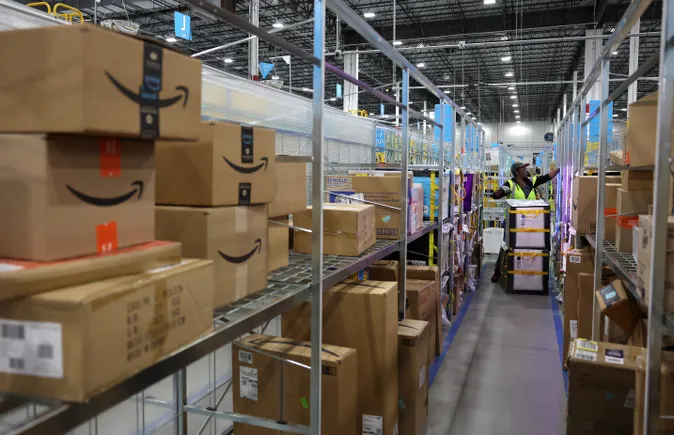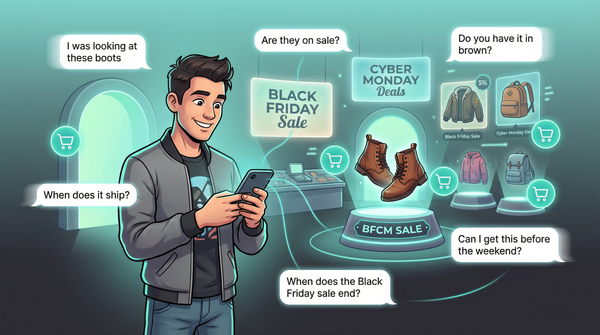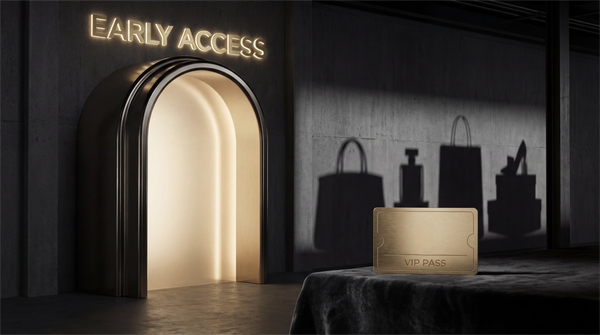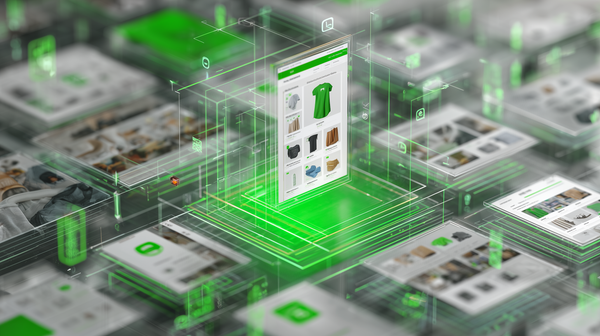Black Friday in August? Why DTC Brands Plan Holiday Campaigns Now

Most mid-sized Shopify brands are still in summer mode—but seasoned DTC operators know Q4 wins are built long before the leaves turn. For direct-to-consumer leaders, August isn’t too early. In fact, it’s the unofficial kickoff for Black Friday and holiday campaign planning.
As one DTC operator put it,
"Q4 wins are made in Q3." (Jamie Watkins, X)
Q4 wins are made in Q3.
— Jamie Watkins | DTC Email Marketing (@jamiewatkinsdtc) August 22, 2025
But right now?
Too many brands are coasting… waiting for October to “get serious.”
By then, it’s already late.
If you want Black Friday to hit hard, Q3 is where the real prep happens.
Not just creative. Not just discounts.
We’re talking:
✅… pic.twitter.com/fIiO84j8yM
Shoppers Are Hunting for Holiday Deals Sooner
Why plan now? Because your customers already are. Each year, holiday shopping starts earlier, and brands are following suit. The holiday season has evolved from a late-November sprint into a months-long marathon.
Major retailers are fueling this shift with “Black Friday in summer” events. In July 2025, U.S. shoppers spent $24.1 billion online during a 96-hour “Black Friday in Summer” sale—a 30% jump from the previous year (Reuters).
The lines between shopping seasons are blurring. Customers are primed for deals well before fall. Recent data backs it up: 42% of U.S. consumers plan to start gift buying by October (Within). Nearly half your audience is shopping early. Waiting until late October to launch holiday promotions is simply too late (Within).
September is now the de facto kickoff for holiday marketing. Brands that roll out campaigns by early fall have more time to build awareness, test offers, and lock in sales from early-bird shoppers. They can also capitalize on lower ad costs before the Q4 frenzy drives prices up (Within).
Lock In Inventory—Don’t Let Supply Chain Grinch Your Q4
Inventory and logistics are another reason DTC brands are planning Black Friday in August. Selling out or facing shipping delays during the holiday rush is every operator’s nightmare. Securing your supply chain now is critical to avoid last-minute crises.
Factories have long lead times, freight costs spike as December nears, and warehouses fill up fast. Even Amazon is pushing merchants to front-load holiday inventory: last year, Amazon moved up its Black Friday inventory deadline to October 19—a week earlier than the previous year (LinkedIn).
Why? Every Q4, inbound shipments face bottlenecks, and items that normally check into fulfillment in a week can take six weeks or more due to seasonal backlogs (LinkedIn).

For Shopify brands, the lesson is clear: secure inventory and logistics early. Confirm fall production runs, negotiate with suppliers while you have leverage, and book freight and fulfillment in advance. By August or September, you should know your Q4 hero SKUs and ensure you won’t run dry when demand surges.
Warm Up Your Customers Months in Advance
Early planning isn’t just operational—it’s about priming your audience. Rather than bombarding customers with promos in November, top DTC brands use late summer and early fall to build engagement and anticipation.
Now is the time to drop hints, share value-add content, and even soft-launch deals.
Some founders run pre-sale events or VIP offers in the fall to get loyal customers buying early. Last year, one DTC brand launched a “Design Your Own Jewelry” event and special holiday collection well before Thanksgiving to drive excitement
(AP News).
Another introduced BOGO deals in early fall as a sneak peek of Black Friday. Both entrepreneurs emphasized unique experiences and showing appreciation to loyal customers to stand out (AP News).
The takeaway: engage your core fans early with exclusive perks, and they’ll reward you with stronger Q4 spend and advocacy.
Start warming up your email list and social followers now. As Chase Diamond puts it:
"If you're not getting your list cleaned and your flows dialed in now, you're already behind." (Source, X)
If you're not getting your list cleaned and your flows dialed in now, you're already behind
— Chase Dimond | Email Marketing Nerd 📧 (@ecomchasedimond) August 22, 2025
Share holiday gift guides, behind-the-scenes peeks at upcoming products, or segment your best customers for “first dibs” on limited holiday stock. Tease your Black Friday theme or flagship offer to build anticipation. By November, your audience will be well-informed, excited, and primed to convert.
Don’t Let Abandoned Carts Kill Early Momentum
Getting shoppers to your site early is one thing. Converting them is another. Cart abandonment spikes in Q4 as competition ramps up and consumers comparison-shop across retailers.
That’s where tools like LiveRecover come in. Unlike standard automated flows, LiveRecover pairs real-time cart recovery with human-powered SMS outreach. When a customer bails at checkout, a LiveRecover agent steps in with a personalized message, often recovering sales that would otherwise slip away.
For operators, this is a margin protector. You’ve already invested in warming up your list and driving clicks—losing those hard-earned shoppers to an abandoned cart is the most expensive leak in your funnel. LiveRecover plugs that gap, especially in the high-stakes run-up to Black Friday, when every conversion point matters.
By weaving LiveRecover into your Q4 stack, you’re not just planning campaigns—you’re protecting the revenue they generate.
Avoid the Last-Minute Crunch (and Costly Mistakes)
The biggest benefit of August/September planning? Avoiding panic mode when Q4 arrives. Despite the stakes, many brands still scramble in October or later.
In mid-July, a DTC survey found only 15.4% of brands had their Q4 strategy fully locked in (Direct to Consumer). The majority were still figuring it out on the fly.
When plans are made late, things slip through the cracks—whether it’s a website crash, a mispriced promo, or a warehouse that can’t keep up.
Early planning turns chaos into control. You have time to double-check site performance, refine creative, coordinate campaigns, and plan customer support. You can also scenario-plan: is your Black Friday backup plan ready if sales underperform, or if demand spikes 3× your forecast?
Most brands feel uneasy about the unknowns—less than 7% say they’re highly confident in their Q4 forecasts, and one in five admit they’re essentially guessing
(Direct to Consumer). Early planning can’t guarantee certainty, but it gives you time to adapt instead of react.
Crucially, an August start lets your team spread out the workload. Designers, marketers, and developers can tackle holiday projects in phases—not all-nighters in November. Media buyers can test messaging in September and iterate before CPMs skyrocket.
As one agency put it, launching early isn’t just about grabbing early sales—it’s about gathering data and learnings that make your peak weeks more effective
(Within).
Brands that invest in September optimization enter late Q4 with dialed-in ads and proven offers, while procrastinators are still A/B testing subject lines on Thanksgiving eve.
Finally, early prep is a morale booster. Q4 in e-commerce is intense, but when you’ve planned ahead, it’s manageable—sometimes even exciting—instead of sheer burnout. Founders who adopt a proactive holiday calendar report more control and confidence when November rolls around.
Conclusion: August Is the New October for Holiday Prep
The days of waiting until pumpkin spice season to plan Black Friday are over. For DTC brands, holiday success in November is won in August and September.
It’s about reading consumer signals (shoppers are ready early), shoring up your backend (so inventory and site won’t buckle), and priming your buyers (so your marketing hits the ground running).
🗓️ Today marks 100 days until Black Friday.
— David Parrottino (@DavidParrottino) August 20, 2025
For eCommerce brands, Q4 is the Super Bowl. The question is: Are you going in with a playbook, or hoping for a Hail Mary?
Here’s what the best operators are doing right now to set up a winning BFCM season 👇
1️⃣ Lock in inventory &…
Most DTC brands now lock in their Black Friday/Cyber Monday media plans by summer (Software Insider). Those who don’t risk being left behind—or forced into costly moves later.
The brands that treat “Black Friday in August” as a motto—and plan well in advance—are far more likely to capture Q4 upside without the usual frenzy.
So ask yourself: is your holiday game plan in motion yet? If not, now’s the time to rally your team, crank up the AC, and start mapping out your campaigns. The quieter months of late summer are the perfect window to strategize before the Q4 storm. Come Black Friday, you’ll be thankful you did.
Subscribe for weekly DTC insights.





